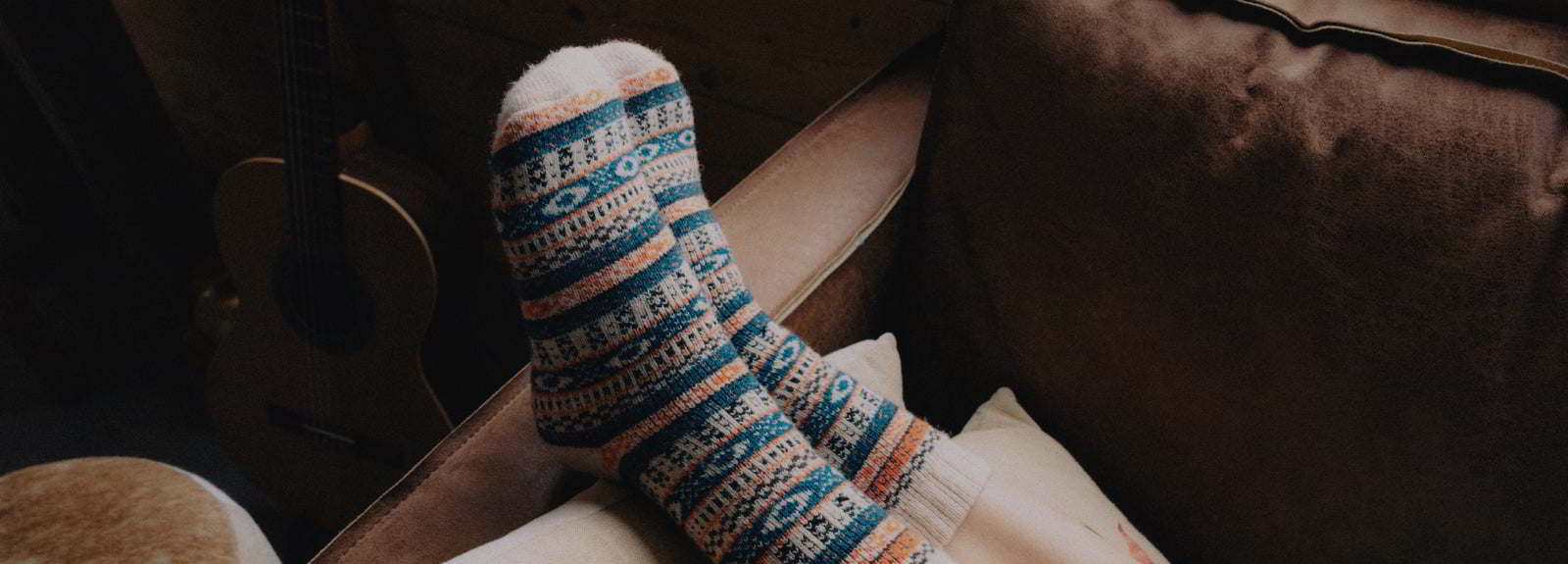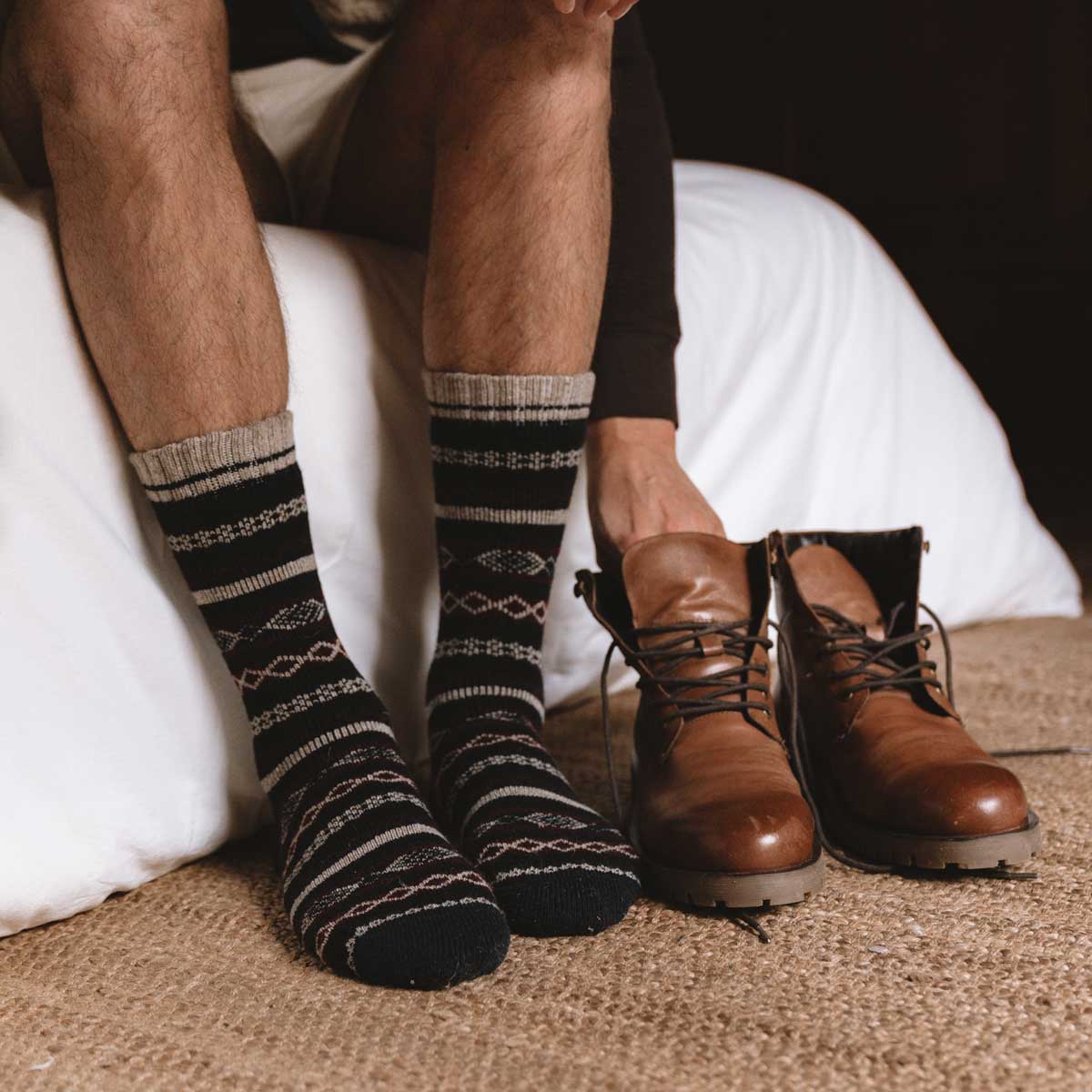Choosing the right socks for daily wear is often overlooked, yet it is crucial for comfort and foot health. Socks serve as a barrier between your feet and shoes, providing cushioning, moisture management, and temperature regulation. With a plethora of options available, selecting the ideal pair can be overwhelming. This article aims to guide you through the key factors to consider when picking socks for everyday use, ensuring you make an informed decision that prioritizes both comfort and durability.
Materials
The material of your socks significantly affects their performance and comfort. Cotton is a popular choice for its softness and breathability, making it ideal for casual wear. However, it tends to retain moisture, which can lead to discomfort and odor. Wool, especially merino wool, is excellent for its moisture-wicking and temperature-regulating properties, suitable for both warm and cold climates. Synthetic fibers like polyester and nylon offer durability and quick-drying features, often blended with natural fibers to enhance performance. Blended materials combine the best qualities of each fiber, offering a balanced solution for daily wear.

Comfort and Fit
A proper fit is essential for sock comfort. Socks that are too tight can restrict circulation, while those that are too loose may bunch up and cause blisters. Look for socks with a snug, yet comfortable fit that hugs your foot without constricting it. Cushioning and padding in the right areas, such as the heel and ball of the foot, can enhance comfort, especially if you spend long hours on your feet. Seamless designs help prevent irritation and chafing, providing a smooth surface against your skin. Prioritizing fit and comfort ensures that your socks support your feet throughout the day.
Durability and Longevity
Investing in durable socks can save you money and reduce waste over time. Look for features such as reinforced heels and toes, which are high-wear areas that benefit from extra strength. Durable socks should withstand regular washing without losing their shape or comfort. Synthetic fibers often enhance durability, making them a good choice for long-lasting socks. Additionally, consider the overall construction quality, including tight stitching and resilient materials. Socks that maintain their integrity after multiple washes and wears offer the best value for daily use.
Moisture Management
Moisture management is a critical factor in sock selection, as sweaty feet can lead to discomfort and odor. Breathable materials like merino wool and certain synthetic fibers help keep your feet dry by wicking moisture away from the skin. This is particularly important for those with active lifestyles or who live in warm climates. Socks designed with ventilation zones or mesh panels can further enhance breathability. Odor control is also important, with some socks incorporating antimicrobial treatments to prevent bacterial growth and keep your feet fresh throughout the day.
Seasonal Considerations
Different seasons require different types of socks to ensure optimal comfort. In warm weather, lightweight and breathable socks made from materials like cotton or moisture-wicking synthetics are ideal. These socks help keep your feet cool and dry. Conversely, in cold weather, thicker socks made from insulating materials like wool can keep your feet warm. All-season socks offer a versatile option, blending materials that provide a balance of warmth and breathability suitable for year-round wear. Choosing socks appropriate for the season ensures your feet remain comfortable regardless of the temperature.
Activity-Based Selection
The best socks for daily wear often depend on your activities. For casual wear, comfort and breathability are key, while athletic activities require socks set with excellent moisture management and cushioning to support high-impact movements. Professional settings may call for dress socks that offer a polished appearance while still providing comfort for long hours of wear. For outdoor adventures, consider socks designed for hiking or other specific activities, which often include features like extra padding, arch support, and blister prevention. Matching your socks to your activities enhances performance and comfort.
Style and Design
Socks are not just functional; they also contribute to your overall style. Available in various colors, patterns, and lengths, socks can complement your outfit and reflect your personal taste. Ankle socks are great for casual or athletic wear, while crew socks offer more coverage and are suitable for both casual and semi-formal settings. Knee-high socks provide additional warmth and support, making them ideal for colder weather or specific activities like skiing. Specialty socks, such as compression socks or no-show socks, serve specific purposes and add variety to your wardrobe. Choosing socks that align with your style preferences ensures you feel confident and comfortable in any setting.
Stuff and Material Choices
The choice of fabric and material is a fundamental aspect when selecting socks for daily wear. Cotton, a widely favored material, is known for its comfort and breathability, making it a suitable option for casual settings. However, its tendency to retain moisture can be a drawback. Wool, particularly merino wool, is prized for its moisture-wicking and insulating properties, making it a versatile choice for both warm and cold climates. Synthetic fibers like polyester and nylon are often incorporated to enhance durability and quick-drying capabilities, frequently found in blends to optimize performance. Blended materials, combining natural and synthetic fibers, offer a balanced approach, providing the best attributes of each type.
Fabric Selection and Composition
The fabric selection plays a crucial role in determining the overall performance and comfort of socks. Cotton remains a popular choice due to its soft texture and breathability, suitable for everyday casual wear. Nonetheless, it has limitations in moisture retention. Wool, especially merino wool, excels in moisture management and temperature regulation, making it ideal for a range of weather conditions. Synthetic fibers such as polyester and nylon contribute to the durability and quick-drying properties of socks, often blended with natural fibers to enhance overall functionality. These blended materials deliver a harmonious mix of qualities, ensuring optimal comfort and longevity for daily use.

Conclusion
Selecting the best socks for daily wear involves considering various factors such as material, comfort, durability, moisture management, seasonal needs, activity requirements, and style. By understanding the benefits and drawbacks of different materials like cotton, wool, and synthetic blends, you can make an informed choice that suits your lifestyle and preferences. Prioritizing comfort and fit ensures that your socks provide adequate support and prevent issues like blisters or discomfort. Durability and proper care will extend the life of your socks, providing long-term value. Moisture-wicking and odor-control features enhance daily comfort, while choosing the right socks for different activities and seasons ensures optimal performance and comfort. Ultimately, the best socks are those that meet your specific needs, offering a perfect balance of comfort, durability, and style.
FAQs
What is the best material for socks in hot weather?
For hot weather, lightweight and breathable materials such as cotton and moisture-wicking synthetic fibers are ideal. These materials help keep your feet cool and dry by allowing air circulation and efficiently managing moisture.
How do I know if my socks fit properly?
Properly fitting socks should hug your foot snugly without being too tight or loose. There should be no excess fabric that can bunch up and cause blisters, and the sock should stay in place without sliding down or constricting your foot.
How often should I replace my socks?
The lifespan of socks depends on their material, frequency of use, and how well they are cared for. Generally, high-quality socks can last several months to a few years. Replace your socks when they show signs of wear and tear, such as holes, thinning fabric, or loss of elasticity.
Are wool socks suitable for warm weather?
Yes, merino wool socks are suitable for warm weather because they have excellent moisture-wicking and breathability properties. Merino wool helps regulate temperature, keeping your feet cool in the heat and warm in the cold.
What are the benefits of wearing compression socks?
Compression socks apply gentle pressure to your legs, promoting better blood circulation and reducing swelling and fatigue. They are beneficial for people who stand or sit for long periods, athletes, and those with certain medical conditions like varicose veins or edema.





Comments